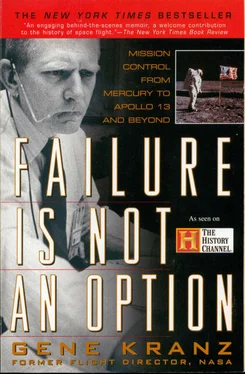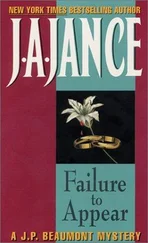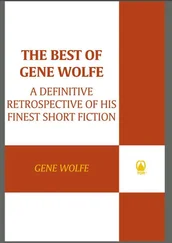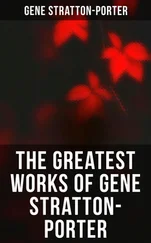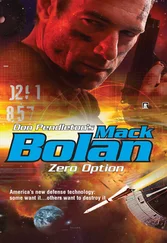Shepard shimmied out of his suit and downed a shot of brandy. An alert reporter standing by the hangar door had seen him and broke the story: “FIRST U.S. ATTEMPT TO PUT MAN IN SPACE POSTPONED 48 HOURS. SHEPARD GIVEN FIRST CALL FOR HISTORIC VENTURE.” The secret was out. Hard-charging Al Shepard was at the head of the line.
We drowned our disappointment in the usual way—with a mission scrub party. No matter what hour the test was scrubbed, we would return to the motel wide awake, after the lounges had closed, or before they opened. We had stashed beer and snacks at the Holiday Inn, which often donated food left over from the previous day’s menu. We would eat and drink, and talk about what had gone wrong. It was a little like throwing a rueful party after a nonbirth; at least we hadn’t experienced another disaster, and the baby was still there in the womb, ready to go. All we could do was pace the floor and wait.
In the heat of the following day, some of us headed to the ocean or the pool, or played full-contact volleyball, to sweat off the beer we had tossed down. The chalked volleyball sidelines didn’t last long and there was the usual quibbling on out-of-bounds calls. The solution was to dig a trench and mark the sidelines with gravel embedded in concrete. Out-of-bounds calls were a lot easier when you came up with bloody forearms after a diving save. Bruises, sprains, jammed fingers, and nasty cuts were the order of the day.
Kraft, a standout baseball catcher and center fielder in college, was a fierce competitor. But on the volleyball court he was no longer the boss, just one of the team members. Carl Huss, the MCC RETRO, was a burly five-foot-eleven guy with black bushy eyebrows and hair. When playing volleyball he had a habit of rising on his toes and shifting from left to right with a rolling motion. His menacing visage, combined with this motion and his perpetual growl, earned him the nickname “Dancing Bear.”
During one match, Huss spiked a shot straight into Kraft’s face; the ball drove the prongs of his sunglasses deep into the flesh of his nose. Without flinching, Kraft pulled out the prongs, wiped the blood off his face, looked at Huss, and growled, “Nice shot. Try me again!”
After multiple injuries to his team members, Kraft set the rule: no volleyball after L – 3—launch minus three days. Any controller violating the rule and unable to perform his console duties would be “disciplined.” No one was willing to find out exactly what kind or degree of discipline Kraft meant.
The beverage of choice after these matches was Swan Lager, an Australian beer, and our supplier was Jack Dowling, the Australian government’s envoy to NASA. Jack was the picture of a typical Aussie. He was a bit older than most of us, stocky, with wavy black hair, flecks of gray in his mustache, and eyebrows like caterpillars. All he needed to complete the image was the Crocodile Dundee bush hat. He had the accent, the one you never missed when you called “Goddard voice” and the switchboard operator patched the voice communications to the Australian tracking stations. You had to be careful about confusing their language with the one we were developing for space.
When we had needed a tracking station in the Southern Hemisphere, the people Down Under were quick to respond. They have always been our stout allies, and their very isolation inspired them to sign up for any new adventure. They sent their volunteers to train with us, and Dowling was one of those who learned to love the States so much he never left.
The personal relationships that developed in the early years at Cape Canaveral provided the foundation of a brotherhood that extended through Mercury, Gemini, and Apollo. This bonding got us through the difficult times. We worked together, played together, and lived together.
If I close my eyes I can recall images of that strip of coastal Florida—a line of motels, restaurants, and bars (some pretty funky) lining the highway that ran south from Daytona Beach through Titusville and Cocoa, where a causeway across the Indian and Banana rivers took you to the small town of Cocoa Beach. It was a two-lane blacktop that shimmered in the hot sun and paralleled the swamp that stood between the Cape and the mainland. Although Orlando was only a short drive inland, it might as well have been on Mars. Our world was confined to a small, tight circle centered on those strange new structures—gantries and launch pads and telemetry antennas—sprouting up on an overgrown sandbar. NASA’s arrival in this once calm and sleepy area would change it forever—and make it perhaps a greater tourist attraction than the locals ever dreamed it could be (and perhaps more than many wanted it to be).
In this setting our bonding produced a spirit that responded to the challenge of John Kennedy’s inaugural address: “Ask not what your country can do for you; ask what you can do for your country.”
This was the spirit that a few days later would bring space and the astronauts to the front pages of newspapers and into the homes and hearts of America.
May 5, 1961, Mercury-Redstone 3
When the launch was scrubbed on May 2, it was reset for May 4—and then scrubbed again because of weather. But then the weatherman gave us a solid Go for the next day. The weather was windy but clearing when Huss and I left the motel shortly after midnight. As we left, I drove around the east end of the motel to see if the searchlights at the launch pad were on. If we saw the lights, we would know that the launch complex was active and the countdown progressing. The lights drew me like a magnet; when I saw them I picked up speed, and to hell with the local cops. Our sleepiness quickly vanished during the twenty-minute drive.
Highway A1A took you through the heart of Cocoa Beach. With only a single stoplight, it was a small town in the process of trying to grow and live with its newfound fame. The brilliant, garish neon of the motels and restaurants and go-go bars seemed more like Las Vegas, but they were soon behind us. The traffic was heavy, as it usually was, cars pulling out of motels and dark streets to join you as you passed by. You drove into an inky darkness after passing Fat Boy’s restaurant, which marked the city limits of Cocoa Beach. This traffic was different from the usual relaxed pace of tourists and locals. From this point the cars on the road were moving swiftly, their drivers knowing exactly where they were headed—a personal rendezvous with history.
The interior of the space capsule that Alan Shepard would soon climb into was so small that a human being could barely fit. The back of his couch was within inches of the heat shield. The instrument panel was less than two feet from his face and the parachutes only five feet forward. John Glenn had hung a sign on the panel: “No Handball Playing in This Area.”
The Redstone rocket would lift Shepard’s two-ton capsule on a fifteen-minute foray into space. He would reach an altitude of 100 miles, experience five minutes of weightlessness followed by a crushing 11-G entry, and land 260 miles downrange from the launch pad.
Closing in on the Cape, I could see that the lights looked much like the lights of the small cities amid swamplands when I trained and flew in Georgia. After a brief stop for a badge check, we continued toward Mercury Control, passing the security roadblocks that are always erected as launch time nears.
Huss was not a man given to making small talk. Like a bear coming out of hibernation, he would wake up slowly, so we didn’t talk to each other. I enjoyed the silence, which allowed me to think about what lay ahead as I made the long swooping turn to the north and the searchlights. The stars were occasionally visible through the muggy haze of the Cape. The outline of the launch tower was not yet visible through the palmetto as we approached Mercury Control. After parking the car, I started to psych myself up, just as I did when I was flying. In my mind, I could hear the marches of John Philip Sousa and the cadence quickened my step.
Читать дальше
